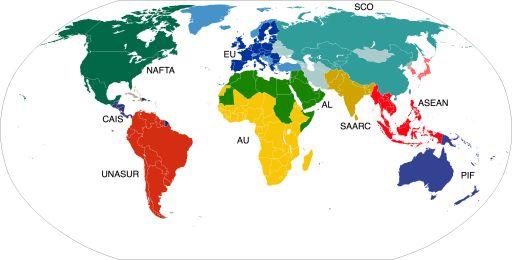Regional Economic Integration refers to agreements among countries in a geographic region to reduce and ultimately remove tariff and non tariff barriers to the free flow of goods, services and factors of production between each other. The various levels of REI are
1. Free Trade Area: All barriers to trade such as tariffs and quotas are removed among member countries t promote free trade. Example- NAFTA (North American Free Trade Agreement)
2. Customs Union: The next step in the integration process is the establishment of a common external trade policy with respect to the non member countries. Example- Andean Pact
3. Common Market: In addition to the above conditions it require free movement of factors of production such as labour, capital and technology between countries. Example- European Community before 1994
4. Economic Union: It require a common currency, a common monetary and fiscal policy and harmonisation of member’s tax rates. Example- EU (European Union)
5. Political Union: This requires the establishment of a common parliament and other political institutions. Example- United States. However EU also has some elements of a political union.
The Economic Case for REI: REI can be seen as an attempt to achieve gains from the free flow of trade and investment countries beyond those attainable under international agreements such as the WTO. Also it is easier to establish a free trade and investment regime among a limited number of adjacent countries than among the world community. Coordination and policy harmonisation problems are largely a result of the number of countries that seek agreement. The greater the number of countries involved, the more perspectives that must be reconciled and the harder it will be to reach agreement.




